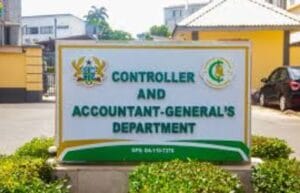
Working on your images will help you gain more traffic, engagement and make sales out of the products you displayed on your website. You might have had an idea about how Search Engine Optimization works and why it is important to use SEO tools.
Using keywords and writing catchy contents is not enough to rank higher in google and other top search engines. You have to work on your image SEO.
You are wasting a valuable asset if you are not optimizing your images well on the internet and it can affect your website visibility on the internet. This piece will provide the needed help to readers on SEO image and how it can improve your website in search engines ranking and then share some basic tips on how to optimize your images.
What is Image SEO?
Image SEO is the method a blog uses to optimize images on their website so it becomes easy for search engines to easily find a content because it was able to read the meaning of the image attached to it.
It helps to improve the visibility and ranking of your contents in Google search engines and other search engines as well. It includes features like image type, size, load time, optimization of alt text and keywords in image file names.
Image SEO is one of the overlooked optimizations which can make you lose valuable traffic, and sink your page’s ability to rise in the index.
Importance of SEO Image Optimization
When you optimize your image well, it drives good traffic to your website. That is just one reason many sites need to optimize their images, but that is not the only reason since there are other benefits which come with well-optimized images on a WordPress site:
- Boost Website Speed: When you optimize your images, it gives you the opportunity to reduce your image size which will boost the speed of your website. And so images that are large or not formatted correctly slow down your site and sometimes annoy your readers.
- Improve User Experience: well optimized images make your site easier to navigate. Visitors will have the best experience and will always love to be on your site to read more when the experience they had was the best. Well-optimized images engage your audience and improve your site’s bounce rate. And once a reader gets the best of experience after visiting your site, the person will always crave to always come back.
- Higher Rank In Image Search: If you have a good image attached to your blog’s story, it will ran/k higher in Google image search and 60 percent of people who browse through those images are likely to visit the source of the image.
6 tips for SEO image optimization
Overall SEO optimization of a website can be quite complicated and you might think the same applies to image SEO. Image SEO isn’t as complicated as other aspects of SEO. Let me walk you through the six tips for SEO image optimization which can help your website get the visibility it deserves.
Your Images Should Have Descriptive File Names
There are countless images on the web. The images help search engines to understand your content well. Giving your images descriptive file names makes it easier to allow search engines to get the actual meaning of stories and verify its credibility. By default the name of any image on your device looks like this IMG1234.jpg. This type of image name does not give any better description to your content.
Therefore before you upload your images to your website, there is the need to give them a descriptive name that will make such pictures stand out among the rest of images on the web with the same storyline. Try to avoid generic names like “(Hotel.jpeg)” and try to be more specific such that you give it a descriptive name to suit your content such as “(Hotel-at-the-beach-side)”.
Compress Your Images
For your website to run faster, then you have to compress your images. Large images mostly have an impact on the speed of your website. It will take a lot of space in your site’s storage.
You can do this by using any of your favorite image tools to do it. You can also use a plugin on WordPress to compress your images. The plugin will automatically compress any image you upload to your site. There are two types of image compression:
Lossy Image Compression: This type of compression allows you to remove a large amount of data from your images which may have an impact on the quality of the image.
Lossless Image Compression: It reduces the size of the image without having any impact on its quality.
After compressing your photos, you might also want to make changes to the size of your images on your WordPress site. WordPress by default generates different image sizes for pictures you upload. It then gives you the opportunity to choose how you want your images to be. Whether small, medium or large.
Pick The Right Images For Your Content
Your images should have something to do with your article. Images of such nature help Google to authenticate the source of the content. Images speak for themselves and having it placed at the right place, generates the right impression about the article.
For instance writing a story about beaches and the image you attach to the story is a picture of a football player. How will you feel about the story in the first place if you are a reader? You will think the author of the content does not have good information to offer and the article is not trustworthy. Same applies to Google.
Include Alt Text
The most important SEO image optimization is the aspect of adding an alt text which gives a definite description of your picture and helps it to appear in relevant search results.
You can add alt text to an image in the WordPress editor. All you need to do is to click on your picture. Go to the settings where you can find the alt text field. After locating the alt text area and clicking on it to input your message,
try to be descriptive as possible in one or two sentences. Go straight to the point about the image you have attached to the content.
Add Images To Sitemap
Make sure you add up images on your site to sitemap. Google recommends this process. Images added to sitemap get quick recognition by Google and get indexed. It can boost your overall site ranking.
Some SEO plugins like Yoast will automatically add your images to sitemap but you can also do it manually by
installing a sitemap plugin to add your images to sitemap. Hiring an SEO expert to do that for you is not a bad idea.
Mobile-friendly Images Should Be Used
Make sure to use mobile-friendly images. Using the correct file type and making sure your images have the right size will definitely make it mobile-friendly to readers.
Mobile phones are devices which are widely used and more than half of internet traffic comes from people using their mobile devices. It is best to view your site images on different types of mobile devices to ensure your images are displayed correctly.








